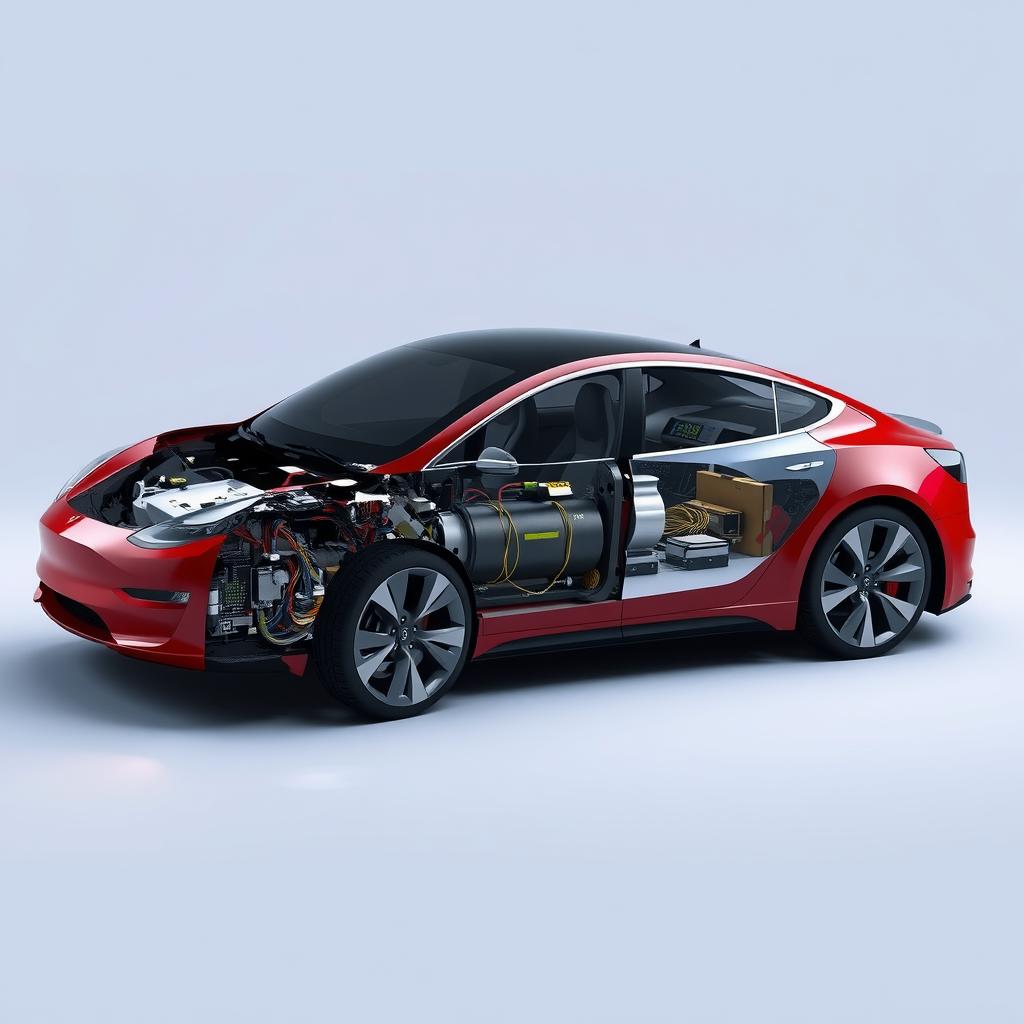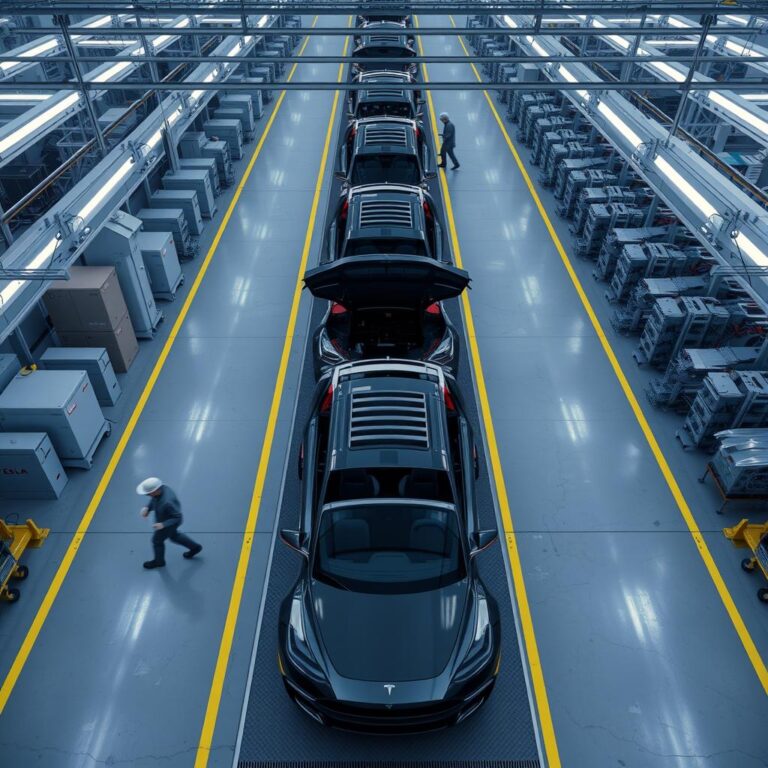Can Tesla Car Be Hacked?
Can Tesla Car Be Hacked?
As electric vehicles (EVs) gain popularity, one of the most common concerns among Tesla owners and potential buyers is the security of their cars. With so much technology packed into Tesla vehicles—ranging from autopilot systems to integrated apps—many people wonder: “Can Tesla car be hacked?” While Tesla cars are known for their advanced security features, no car or technology is entirely invulnerable to cyberattacks. But how likely is it that a hacker can access your Tesla, and what can you do to protect your car from potential security threats? Let’s explore the world of Tesla security, potential vulnerabilities, and what the company is doing to ensure your car stays safe.
In this article, we’ll dive into whether Tesla cars can be hacked, the methods hackers might use, how Tesla ensures vehicle security, and what you can do as a Tesla owner to protect your car from cyberattacks.
Can Tesla Cars Be Hacked?
The short answer is yes, like any connected device, a Tesla car can potentially be hacked. However, Tesla has taken extensive measures to make their vehicles more secure than many other cars on the market. While Tesla cars are highly connected and use software to control many aspects of the vehicle, Tesla is also known for its robust cybersecurity practices, including regular software updates and the use of encryption. The company has dedicated resources to ensure that its vehicles are protected from remote attacks and vulnerabilities that could potentially compromise the car’s systems.
That being said, no system is completely secure, and hackers are always evolving their techniques. Let’s take a closer look at how Tesla secures its cars and the potential risks.
1. Tesla’s Security Features
Tesla cars come equipped with a variety of advanced security features designed to protect against hacking attempts. Some of the most notable features include:
- Regular Software Updates: Tesla is well-known for its over-the-air software updates. These updates not only add new features to the car but also address potential security vulnerabilities. By constantly updating its software, Tesla reduces the risk of hackers exploiting known flaws.
- Encryption: Tesla uses strong encryption protocols to protect sensitive data in the vehicle. This ensures that any communication between the car, the Tesla app, and Tesla servers is secure.
- Keyless Entry Protection: Tesla’s keyless entry system is sophisticated, with multiple layers of security to prevent unauthorized access. The Tesla app also requires secure login credentials and, for added protection, two-factor authentication (2FA) is available for your account.
- Camera and Sensor Surveillance: Tesla vehicles are equipped with multiple cameras and sensors that monitor the car’s surroundings. These cameras can record footage in the event of a break-in or vandalism and alert the owner through the Tesla app. This adds an extra layer of security against physical tampering.
Despite these measures, hackers may still find ways to exploit vulnerabilities in Tesla’s systems. Let’s explore some of the potential risks associated with hacking a Tesla vehicle.
2. Potential Ways a Tesla Car Can Be Hacked
While Tesla takes extensive steps to protect its cars, like any device that’s connected to the internet, there are always potential attack vectors that hackers may exploit. Some of the most common methods hackers might use to try to compromise a Tesla include:
- Remote Exploits: Tesla’s cars are heavily reliant on software, with many features controlled via internet connectivity. Hackers could potentially exploit vulnerabilities in the car’s software, similar to how cyberattacks are launched on other smart devices or connected cars. These exploits could allow hackers to remotely access and control vehicle functions, like opening doors or starting the car.
- Bluetooth and Wi-Fi Hacking: Tesla vehicles have Bluetooth and Wi-Fi capabilities, which are used for connecting the car to mobile devices or home networks. Hackers could try to access the car’s systems through these connections if they exploit a weakness or if the owner’s devices are compromised.
- Physical Access: If a hacker gains physical access to the car, they may attempt to manipulate the car’s onboard computer systems directly. Tesla cars have a complex software system, and some vulnerabilities could be exploited by someone with enough knowledge of the vehicle’s inner workings. However, gaining physical access to the car typically requires bypassing multiple security layers.
- Phishing and App Manipulation: Since Tesla vehicles can be controlled through the Tesla mobile app, a hacker might attempt to trick the car owner into revealing login credentials through phishing attacks. With access to the owner’s account, the hacker could potentially control the car remotely.
3. How Tesla Responds to Cybersecurity Threats
Tesla takes security very seriously and has a dedicated team working to protect its vehicles from cyberattacks. Here are some of the ways Tesla responds to potential threats:
- Bug Bounty Program: Tesla runs a bug bounty program where security researchers are rewarded for finding vulnerabilities in the car’s software. This proactive approach allows Tesla to identify and fix potential security issues before they can be exploited by hackers.
- Over-the-Air Updates: Tesla regularly pushes software updates to its cars to fix security flaws and add new features. This method ensures that all Tesla vehicles are running the latest version of the software, minimizing the risk of hackers exploiting outdated systems.
- Collaboration with Cybersecurity Experts: Tesla collaborates with cybersecurity firms and researchers to improve the security of its vehicles. This partnership helps Tesla stay ahead of potential threats and ensures its cars remain as secure as possible.
4. What Can Tesla Owners Do to Protect Their Cars?
Tesla owners can take several steps to protect their vehicles from potential hacking attempts:
- Enable Two-Factor Authentication (2FA): Tesla offers two-factor authentication for account access, which adds an extra layer of security. Enabling 2FA ensures that even if someone gains access to your password, they won’t be able to access your Tesla account without the second authentication step.
- Use Strong Passwords: It’s essential to use a strong and unique password for your Tesla account. Avoid using easily guessable passwords and consider using a password manager to keep your login credentials secure.
- Keep Software Updated: Ensure your Tesla is running the latest software updates by enabling automatic updates. These updates often include security patches that address newly discovered vulnerabilities.
- Avoid Untrusted Apps and Devices: Be cautious about connecting your Tesla to third-party apps or devices that could pose a security risk. Only use trusted sources when downloading apps or connecting your car to new devices.
Conclusion: Can Tesla Cars Be Hacked?
In conclusion, while it is technically possible for Tesla cars to be hacked, the company’s commitment to security and its proactive approach to addressing vulnerabilities make it much more difficult for hackers to compromise the vehicles. Tesla employs a variety of security features, such as regular software updates, encryption, and two-factor authentication, to protect its vehicles from cyberattacks.
As with any connected device, there are always risks, but Tesla owners can take steps to further secure their vehicles. By following best security practices and staying vigilant, Tesla owners can significantly reduce the risk of their car being hacked.

Frequently Asked Questions About Tesla Car Hacking
1. Can hackers remotely control my Tesla car?
While Tesla cars are equipped with sophisticated software, Tesla implements numerous security features to prevent remote hacking attempts. Tesla’s regular software updates, encryption, and advanced cybersecurity measures make it difficult for hackers to control the vehicle remotely. However, as with any connected device, vulnerabilities may occasionally exist, and hackers with advanced skills might exploit them. Tesla continuously works to address and fix these potential weaknesses.
2. Has anyone ever successfully hacked a Tesla car?
While there have been some reported cases of security researchers exploiting vulnerabilities in Tesla vehicles, these instances are rare and typically involve controlled environments or demonstrations of potential risks. Tesla’s security team actively works to patch these vulnerabilities through software updates, making it much harder for hackers to exploit these issues in real-world situations. Overall, Tesla vehicles are considered to be among the most secure cars on the market.
3. How does Tesla ensure the security of its software?
Tesla ensures the security of its software through regular over-the-air updates that address security flaws, improve performance, and add new features. These updates allow Tesla vehicles to remain protected from emerging threats. Tesla also uses encryption, two-factor authentication, and a bug bounty program to proactively identify and fix vulnerabilities. Additionally, Tesla collaborates with cybersecurity experts to stay ahead of potential security risks.
4. Can hackers bypass Tesla’s keyless entry system?
The keyless entry system in Tesla cars is designed with multiple layers of security to prevent unauthorized access. However, in rare cases, advanced hackers have been able to bypass keyless entry systems by using relay attacks, which amplify the signal from the key fob. To mitigate this risk, Tesla owners can store their key fobs in Faraday pouches, which block the signal and prevent the fob from being accessed remotely by hackers.
5. What should I do if I think my Tesla has been hacked?
If you suspect that your Tesla has been hacked or compromised, the first step is to contact Tesla support immediately. Tesla’s team can investigate and work with you to secure your vehicle. In addition, it’s important to change your Tesla account password, enable two-factor authentication, and update any security settings. It’s also a good idea to monitor your car’s behavior and be vigilant about any unusual activity.
6. Can a hacker control Tesla’s autopilot features?
Tesla’s autopilot and self-driving features are controlled by sophisticated software and sensors, making them highly secure. While there have been theoretical concerns about the potential for hackers to manipulate autopilot functionality, Tesla’s strict safety measures and ongoing software updates make it highly unlikely. Additionally, Tesla’s autopilot system requires constant monitoring by the driver, and any disengagement from the system would immediately return control to the driver. Tesla continues to enhance the security of its autopilot systems to prevent potential vulnerabilities.
Conclusion: Can Tesla Cars Be Hacked?
While Tesla cars, like all connected devices, are susceptible to potential hacking attempts, the company’s proactive approach to cybersecurity significantly reduces the risk of successful hacks. Tesla uses strong encryption, regular software updates, and other security measures to protect its vehicles and the data they store. Tesla owners can further secure their cars by using strong passwords, enabling two-factor authentication, and following best security practices.
Overall, while no system is completely immune to attacks, Tesla has demonstrated a strong commitment to the security and safety of its vehicles. By staying informed and vigilant, Tesla owners can help keep their cars secure and enjoy the benefits of cutting-edge technology without worrying about the risks of hacking.



